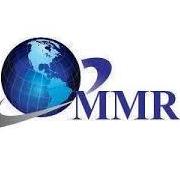United States Printed Circuit Board Market Overview
The United States printed circuit board (PCB) market is projected to reach US$ 34.2 billion by 2033 from US$ 23.58 billion in 2024, growing at a CAGR of 4.22% between 2025 and 2033. Market expansion is fueled by the rising demand for electronics, automotive and aerospace industry growth, technological improvements in high-density and flexible PCBs, and the increasing adoption of wearable devices, Internet of Things (IoT) applications, 5G infrastructure, artificial intelligence (AI), and renewable energy technologies.
PCBs serve as the backbone of electronic devices, enabling efficient, compact, and organized electrical connectivity. As electronics become more sophisticated and miniaturized, PCB demand continues to rise, particularly in applications requiring multilayer, high-frequency, and flexible designs. The United States market is also influenced by strong R&D initiatives, advanced manufacturing capabilities, and a vibrant technology ecosystem across various states.
Full Access Report:https://www.renub.com/united-states-printed-circuit-board-market-p.php
United States Printed Circuit Board Industry Outlook
A printed circuit board is a substrate with conductive pathways that electrically connect and physically support electronic components. PCBs can be single-layer, double-layer, multi-layer, high-density interconnect (HDI), flexible, or rigid-flex depending on the application. They are integral to nearly every electronic device, from smartphones and laptops to medical instruments, automotive systems, and industrial machinery.
The U.S. PCB industry benefits from increasing consumer and industrial electronics demand. Technological advancements allow manufacturers to produce compact, high-performance, and reliable PCBs, which are essential for applications such as EV battery management, sensors, and AI-driven devices. Furthermore, investments in renewable energy, aerospace, and defense sectors drive high-specification PCB adoption. Miniaturization trends and the growing complexity of devices demand flexible, multilayer, and high-frequency PCBs that enhance performance and reliability.
Growth Drivers for the United States PCB Market
Rising Electronics Demand
The surge in consumer and industrial electronics is a significant growth driver. Devices such as smartphones, wearables, tablets, laptops, gaming consoles, smart home systems, and IoT applications require increasingly complex PCBs. Manufacturers are focusing on high-density, multilayer designs to integrate more features while maintaining device compactness.
Healthcare electronics, including diagnostic and monitoring equipment, also rely heavily on advanced PCBs for precision and reliability. The continuous evolution of consumer expectations for faster, smarter, and energy-efficient devices drives innovation in PCB materials, thermal management, and signal integrity, reinforcing market growth.
Automotive Sector Growth
The automotive industry is one of the largest consumers of PCBs in the U.S., particularly due to electric vehicles (EVs), autonomous vehicles, and advanced driver-assistance systems (ADAS). Modern vehicles rely on multiple PCBs for battery management, infotainment systems, sensors, and connectivity.
As vehicles become smarter and more connected, the number and complexity of PCBs per car increase. High-quality multilayer, high-frequency PCBs are crucial to meet safety, efficiency, and performance standards. Continuous investments from traditional automakers and EV startups are propelling PCB demand for next-generation automotive electronics.
5G and AI Adoption
The deployment of 5G networks and the increasing use of AI technologies are critical factors driving PCB demand. 5G infrastructure, including antennas and base stations, requires multilayer, high-speed, high-frequency PCBs capable of handling massive data traffic with minimal signal loss.
Similarly, AI applications—spanning data centers, robotics, autonomous vehicles, and smart devices—depend on sophisticated, high-performance PCBs. The rapid expansion of cloud computing, edge devices, and IoT ecosystems increases the need for precise, reliable circuit boards, reinforcing U.S. PCB market growth.
Challenges in the United States PCB Market
Supply Chain Disruptions
The U.S. PCB industry depends heavily on imported raw materials such as copper, laminates, fiberglass, and specialty chemicals. Global supply chain disruptions—caused by trade restrictions, geopolitical tensions, or natural disasters—can increase costs, delay production, and compromise quality.
This dependency exposes manufacturers to volatility in prices and shortages. Establishing alternative sourcing strategies and improving supply chain resilience are essential to maintain production stability and meet growing electronics demand.
Intense Competition
Competition is fierce from both domestic and international PCB manufacturers. U.S. companies face pressure to produce high-density, multilayer, flexible, and high-frequency PCBs while maintaining cost efficiency.
International rivals often benefit from lower production costs, impacting profit margins. Domestic manufacturers must invest in R&D, advanced manufacturing, and quality assurance to remain competitive. Smaller players may struggle to compete with established manufacturers who have economies of scale, advanced production capabilities, and extensive client networks.
👉 Want to explore detailed market trends, segment insights, and forecasts? 🔗 Request Sample Report:https://www.renub.com/request-sample-page.php?gturl=united-states-printed-circuit-board-market-p.php
Key Regional Markets in the United States
California Printed Circuit Board Market
California is a hub for PCB demand due to its technology and electronics ecosystem, particularly Silicon Valley. Consumer electronics, semiconductors, and communication devices drive high-density and multilayer PCB consumption.
The state hosts aerospace, automotive electronics, and medical device companies, boosting PCB adoption. Investment in R&D, advanced manufacturing, and proximity to tech clients strengthens California’s position. Growth in EVs, IoT, and smart city infrastructure further elevates demand for flexible and high-frequency PCBs.
Texas Printed Circuit Board Market
Texas benefits from a large industrial, automotive, and aerospace sector. PCB demand is growing with EV production, industrial automation, and aerospace electronics. Rigid, multilayer, and high-performance PCBs are critical for these applications.
Data center expansion, telecommunication infrastructure, and renewable energy projects also drive PCB consumption. Texas’s manufacturing hubs and skilled workforce facilitate efficient production, positioning it as a key state for PCB suppliers in the U.S.
New York Printed Circuit Board Market
New York’s PCB market is influenced by telecommunications, data centers, fintech, and defense electronics. High-density, high-speed, and multilayer PCBs are essential for servers, network equipment, and military-grade electronics.
The state hosts leading electronics manufacturers, R&D labs, and tech startups, fostering innovation-intensive applications. Aerospace, medical devices, IoT, AI, and automation adoption further bolster PCB demand. Government initiatives and investment in smart infrastructure enhance New York’s strategic importance for PCB production.
Florida Printed Circuit Board Market
Florida’s PCB consumption is shaped by aerospace, defense, medical devices, and industrial electronics. Companies specializing in avionics, space technology, robotics, and renewable energy require reliable, high-performance PCBs.
The state’s growing healthcare and medical device sector increases demand for compact, multilayer, and high-frequency boards. Investments in IoT, smart infrastructure, and automation drive additional PCB adoption. Florida’s ports, logistics infrastructure, skilled labor, and industrial policies make it a promising market for PCB manufacturers.
Recent Developments in the United States PCB Market
· August 2025: Ventec International announced plans for a USD 17 million facility in Thailand to serve U.S. and Asian automotive and aerospace clients.
· July 2025: TTM Technologies acquired a 750,000-square-foot facility in Eau Claire, Wisconsin, and secured land in Penang, Malaysia, to expand production of advanced-technology PCBs for data-center networking.
· June 2025: Jabil launched a USD 500 million multi-year program to expand U.S. manufacturing for cloud computing and AI data-center hardware, with operations expected by mid-2026.
These developments indicate strategic investment and capacity expansion by key PCB manufacturers to meet rising demand from technology-intensive industries.
United States PCB Market Segmentation
By Type
· Single-Sided PCBs: Basic applications with cost efficiency.
· Double-Sided PCBs: Increased component density for moderate complexity.
· Multi-Layer PCBs: High-density boards for advanced electronics.
· HDI (High-Density Interconnect): Compact, high-performance PCBs for wearables, mobile devices, and IoT.
By Substrate
· Rigid PCBs: Durable, widely used in industrial and consumer electronics.
· Flexible PCBs: Lightweight, bendable boards for wearables, automotive, and medical devices.
· Rigid-Flex PCBs: Hybrid designs for complex aerospace, defense, and high-end electronics.
By End Use
· Industrial Electronics: Automation, machinery, and process control applications.
· Healthcare: Diagnostic equipment, monitors, and medical devices.
· Aerospace and Defense: Avionics, communication, and defense electronics.
· Automotive: EVs, ADAS, infotainment, and connectivity systems.
· IT and Telecom: Data centers, networking, and 5G infrastructure.
· Consumer Electronics: Smartphones, wearables, gaming consoles, and laptops.
· Others: Emerging applications in renewable energy, robotics, and IoT devices.
By Key States
California, Texas, New York, Florida, Illinois, Pennsylvania, Ohio, Georgia, New Jersey, Washington, North Carolina, Massachusetts, Virginia, Michigan, Maryland, Colorado, Tennessee, Indiana, Arizona, Minnesota, Wisconsin, Missouri, Connecticut, South Carolina, Oregon, Louisiana, Alabama, Kentucky, and the rest of the United States.
Competitive Landscape and Key Players
Leading PCB manufacturers in the U.S. focus on technological innovation, capacity expansion, and strategic partnerships. Major companies include:
· Advanced Circuits Inc.: High-performance PCBs for industrial and consumer applications.
· Zhen Ding Technology Holding Limited: Multilayer and HDI PCB manufacturing expertise.
· Unimicron Technology Corporation: Advanced PCB production for automotive and telecom sectors.
· Würth Elektronik GmbH & Co. KG: Focused on industrial and automotive PCBs.
· Becker & Müller Circuit Printing GmbH: Flexible and rigid-flex solutions.
· Murrietta Circuits: Specialized PCB solutions for high-tech industries.
· Nippon Mektron Ltd. (NOK Corporation): Flexible PCBs for electronics and automotive.
· Sumitomo Corporation: Diverse PCB production for multiple end-use applications.
· TTM Technologies Inc.: Multi-layer and advanced PCBs for data centers, aerospace, and automotive.
Market Trends and Future Outlook
The U.S. PCB market is influenced by several ongoing trends:
· Miniaturization and HDI PCBs: Smaller devices require more compact, high-density circuit boards.
· Flexible and Rigid-Flex Growth: Wearables, EVs, and IoT devices increase adoption of bendable and hybrid PCBs.
· IoT, 5G, and AI Expansion: Infrastructure and smart devices boost demand for advanced, high-frequency PCBs.
· Automotive Electronics: EVs and autonomous vehicles drive specialized PCB requirements.
· Sustainable Manufacturing: Focus on eco-friendly materials and energy-efficient production techniques.
With ongoing investment in technology, R&D, and manufacturing infrastructure, the U.S. PCB market is expected to maintain steady growth through 2033, supported by rising electronics demand, automotive innovation, and digital transformation across multiple sectors.
👉 For deeper analysis, detailed segment data, and company insights: 🔗 Request Customization Report:https://www.renub.com/request-customization-page.php?gturl=united-states-printed-circuit-board-market-p.php
Conclusion
The United States PCB market is poised for robust growth, driven by rising consumer electronics adoption, automotive sector expansion, and the integration of advanced technologies such as 5G, AI, and IoT. Regional markets like California, Texas, New York, and Florida are strategically important due to their tech, automotive, and aerospace ecosystems.
Key trends—miniaturization, flexible PCBs, high-density designs, and smart infrastructure adoption—are shaping the market. Challenges, including supply chain dependencies and intense competition, are encouraging investment in innovation, strategic partnerships, and sustainable production methods. Overall, the U.S. PCB market presents strong growth opportunities, fueled by technological advancement and evolving consumer and industrial demand.
Note: If you need details, data, or insights not covered in this report, we are glad to assist. Through our customization service, we will collect and deliver the information you require, tailored to your specific needs. Share your requirements with us, and we will update the report to align with your expectations.







